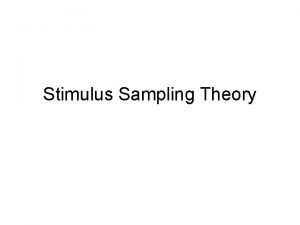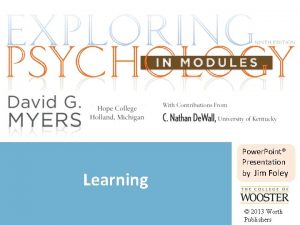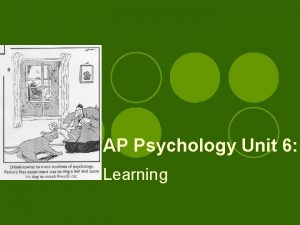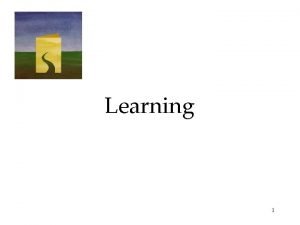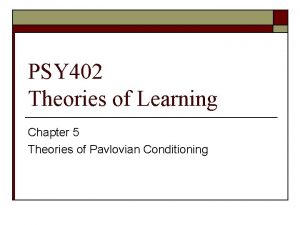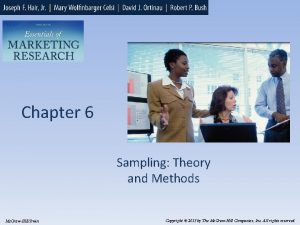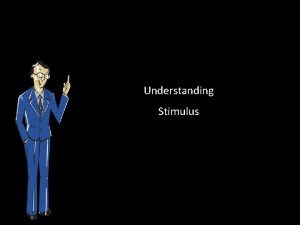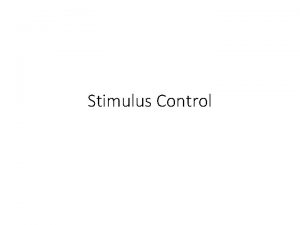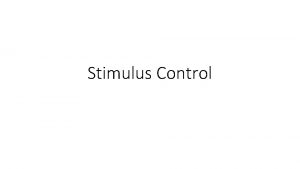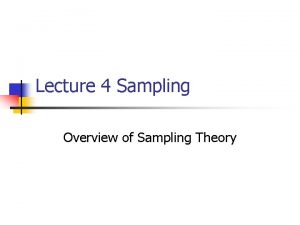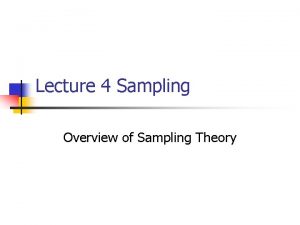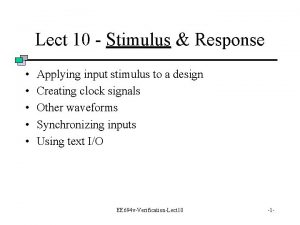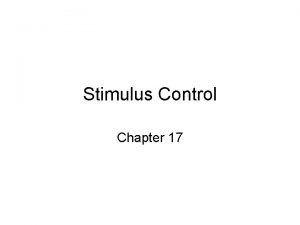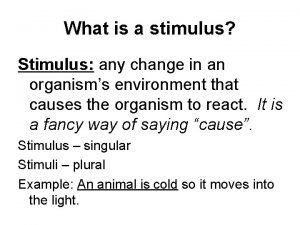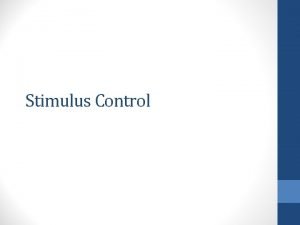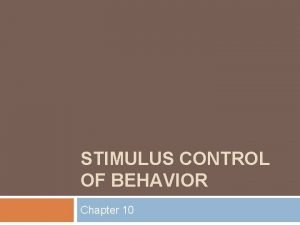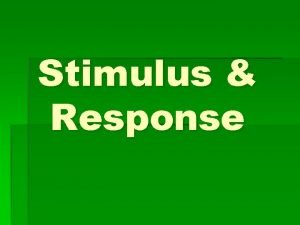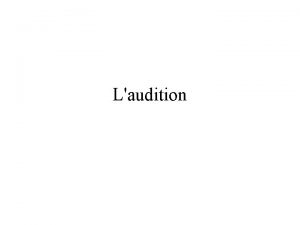Stimulus Sampling Theory Agenda Stimulus Sampling Theory overview





















- Slides: 21

Stimulus Sampling Theory

Agenda • • Stimulus Sampling Theory overview Analytic & simulation models Estes & Straughan, 1954 Homeworks 1 & 2

Stimulus Sampling Theory is Stimulus Elements is Stimulus S 1 is is is is is Associated With A Associated With B Activated on Trial n is = Prob of sampling Element i given Stimulus S

Stimulus Sampling Theory P(A) = 1/4 Stimulus Elements is Stimulus S 1 is is is is is

Stimulus Sampling Theory Feedback for A Stimulus Elements is Stimulus S 1 is is is is is

Stimulus Sampling Theory Stimulus Elements is Stimulus S 2 is is is is is

Stimulus Sampling Theory P(A) = 1/2 Stimulus Elements is Stimulus S 2 is is is is is

Stimulus Sampling Theory Feedback for B Stimulus Elements is Stimulus S 2 is is is is is

An Example • One of two stimuli, Red A or Blue B, appear. • You are simply to learn when to press a button.

An Example. 1. 3 A P(Press) = 0/3. 3 . 1

An Example. 1. 3 A Feedback = Press. 3 . 1

An Example. 3. 1. 2. 1 B P(Press) = 1/2. 3 . 1 . 3

An Example. 3. 1. 2. 1 B Feedback = No Press. 3 . 1 . 3

An Example. 3. 1. 2. 1 B P(Press) = 0/2. 3 . 1 . 3

An Example. 3. 1. 2. 1 B Feedback = Press. 3 . 1 . 3

A Modern Example 2 5 1 7 2 3 9 5 2 Phonology Orthography Semantics 3 7 8 Context

What are Stimulus Elements? • “The concept of stimulus element is not defined in terms of observable events; it has the status of a primitive term within theory” (p. 4). • “Relating experimental manipulations to a stimulus sampling parameter … is by no means necessary … for the derivation of testable predictions. To the extent that directly testable implications of theory are supported by evidence, the concepts of stimulus sampling remain tenable” (p. 4).

Is Stimulus Sampling Theory a Model? • “The term ‘stimulus sampling theory’ refers to a number of theories differing with respect to special assumptions and their mathematical expression, yet sharing a common approach to conceptual representation of the stimulus situation and the formation of associative connections, rather than to a single coherent set of assumptions formulated to apply to all the experimental procedures employed in the study of learning” (p. 1).

Analytic & Simulation Models • An analytic solution to a model is one in which an equation is used to describe the output of the model. • A simulation result is produced by following a set of procedures.

Analytic & Simulation Models 1) Sample S’ from S on Trial n 2) P(A) = Proportion A from S’ 3) Associate S’ with feedback 4) Go to 1

Analytic & Simulation Models • In general, an analytic solution is preferred. – Less prone to specific sequences. – Can often make the same predictions as simulation. – Faster. • Especially in fitting programs. – Easier.
 Stimulus sampling theory
Stimulus sampling theory Conditioned stimulus psychology definition
Conditioned stimulus psychology definition Unit 6 ap psychology
Unit 6 ap psychology What make learning permanent
What make learning permanent Agenda sistemica y agenda institucional
Agenda sistemica y agenda institucional Probability sampling vs non probability sampling
Probability sampling vs non probability sampling Systematic sampling disadvantages
Systematic sampling disadvantages What is stratified sampling
What is stratified sampling Contoh time sampling
Contoh time sampling Cluster random sampling vs stratified
Cluster random sampling vs stratified Non probability sampling
Non probability sampling Natural sampling vs flat top sampling
Natural sampling vs flat top sampling Environmental psychology definition
Environmental psychology definition Stimulus substitution theory
Stimulus substitution theory Probability and nonprobability sampling
Probability and nonprobability sampling Www stands for world wide web
Www stands for world wide web Maximo work order priority
Maximo work order priority Universal modelling language
Universal modelling language Uml overview
Uml overview Vertical overview
Vertical overview Figure 12-1 provides an overview of the lymphatic vessels
Figure 12-1 provides an overview of the lymphatic vessels Pulmonary circulation system
Pulmonary circulation system
